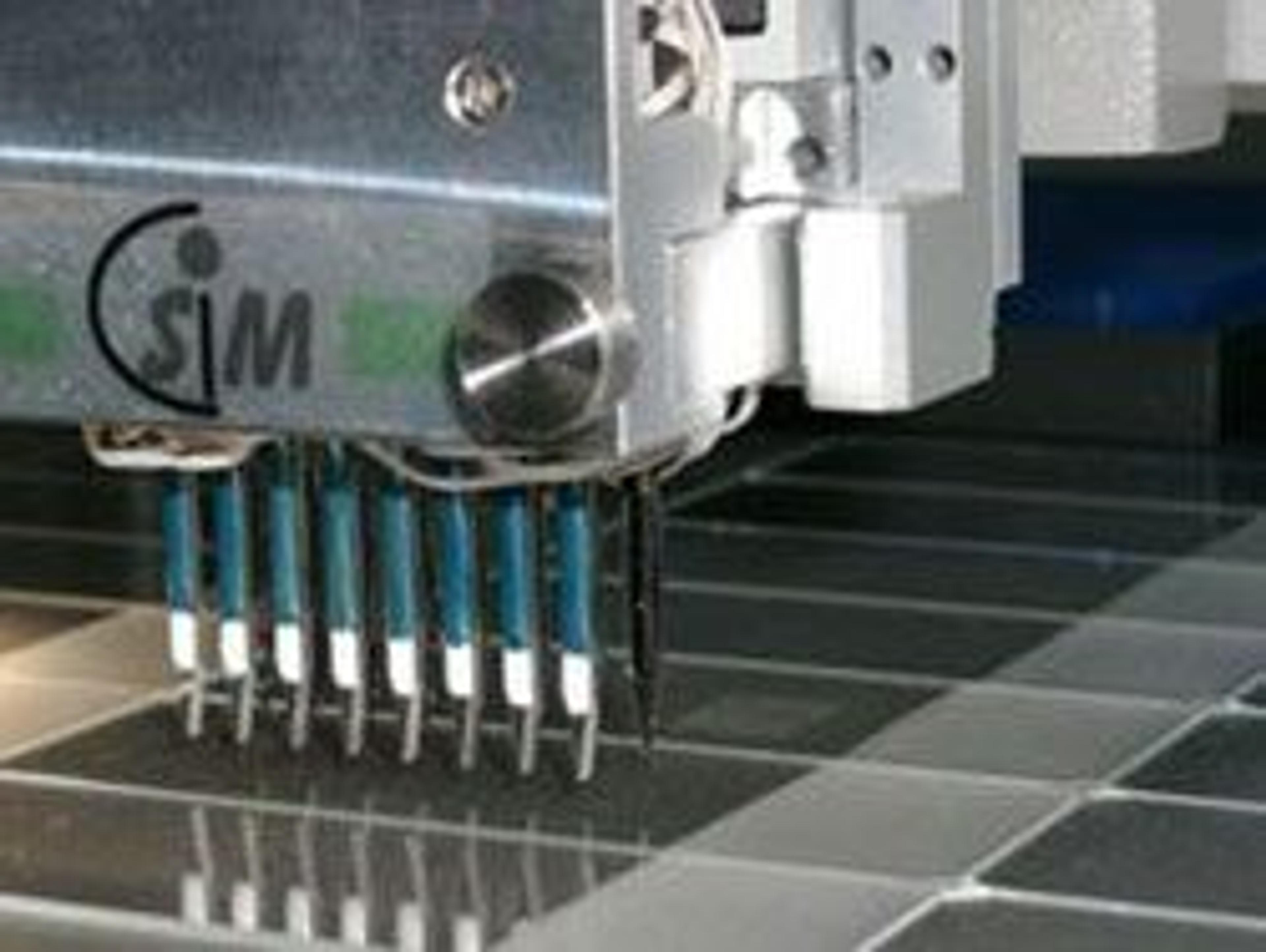Analytik Reports on Edinburgh-based Life Sciences Company, SESMOS, using the GeSiM Nano-Plotter in the Development and Production of Biosensors
22 Apr 2013
SESMOS is a life sciences company, based in Edinburgh, which develops a novel integrated screening and validation process for drug discovery. The core of the technology is based on miniaturised small molecule libraries and fully quantitative and quality controlled biophysical screening technologies from the University of Edinburgh, linked with an innovative label free biosensor chip technology from Siemens AG in Munich.
The SESMOS biosensor chip, known as a thin-film bulk acoustic resonator array, contains multiple individual sensors. Each of these sensors requires unique chemistry. The GeSiM Nano-Plotter is being used to specifically functionalize individual micron scale pixels on these biosensors.
The number of possible devices available for the process was limited by the joint requirements for sub-nl volumes, non-contact dispensing and automatic optical alignment to the underlying Silicon structure. One of the main reasons for SESMOS choosing to purchase the GeSiM system was the optical target identification imaging system offered by GeSiM. This enables the biochip production by automatically detecting small patterns (e.g alignment marks on the chip) and then defining a coordinate system allowing precise spotting on the required chip positions. This feature works well for the SESMOS application because of their need to spot very accurately and precisely on defined targets (spot positions) on the biosensor chips.
Talking about the advantages of the Nano-Plotter system, Analytik's product specialist, Hiran Vegad, says, "the GeSiM's non-contact nanolitre dispenser enables users to check the size/shape of dispensed spots and then change the dispensing parameters (voltage/frequency) of each individual piezo tip to provide sample consistency (viscosity, fluidity, electrical charge, etc.) to ultimately provide optimal high spotting performance. This is a very important feature and benefit when working with different types of fluids and samples. It is a strong differentiator when compared to competitive spotting instruments; they may be limited with respect to the type of samples that could be easily handled."

